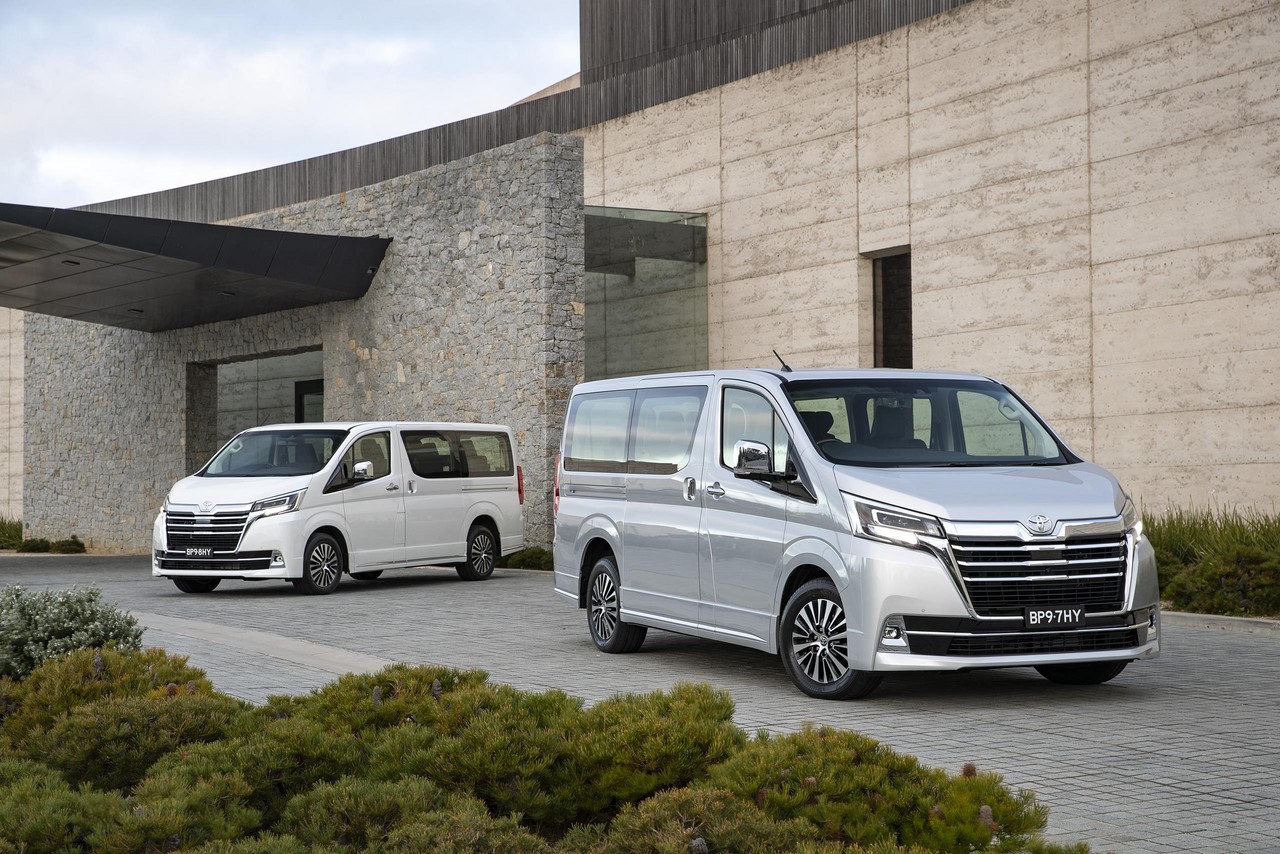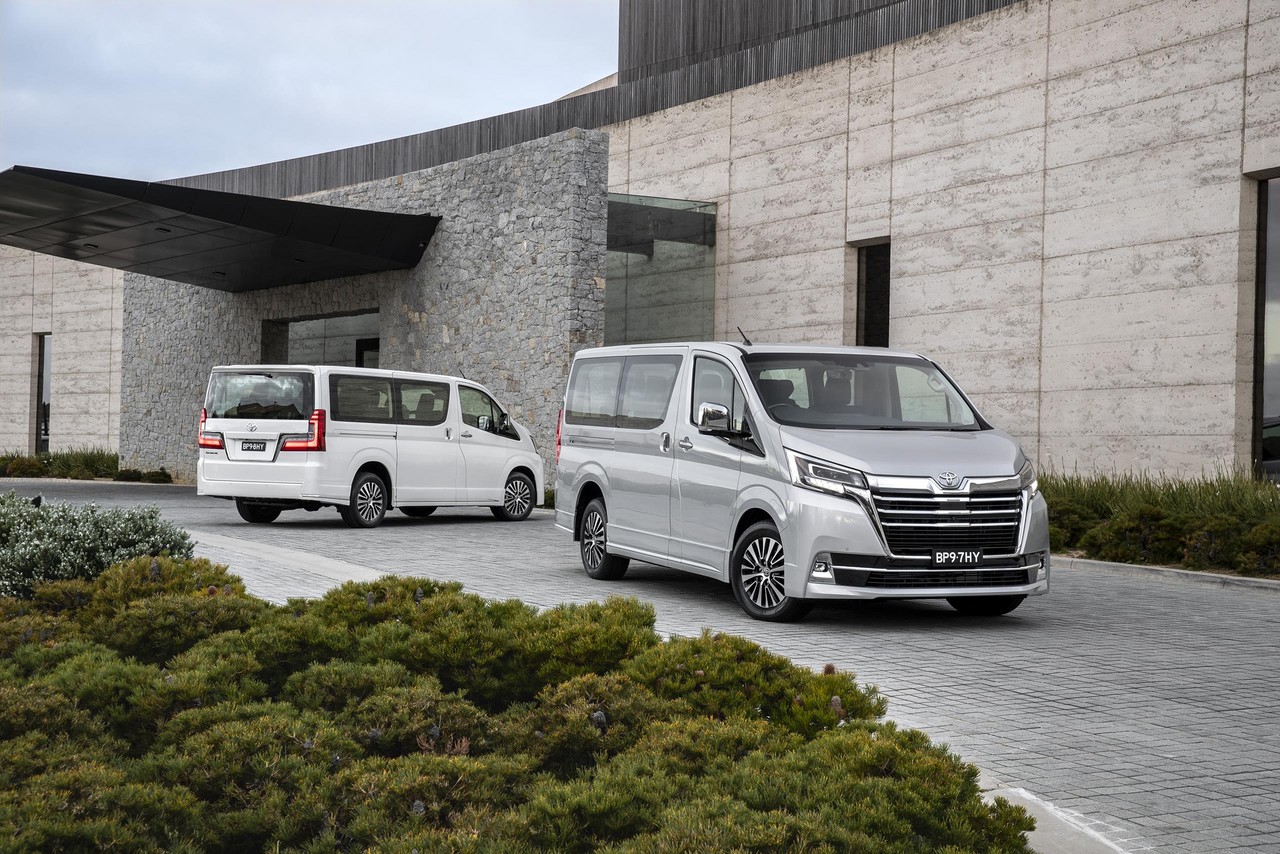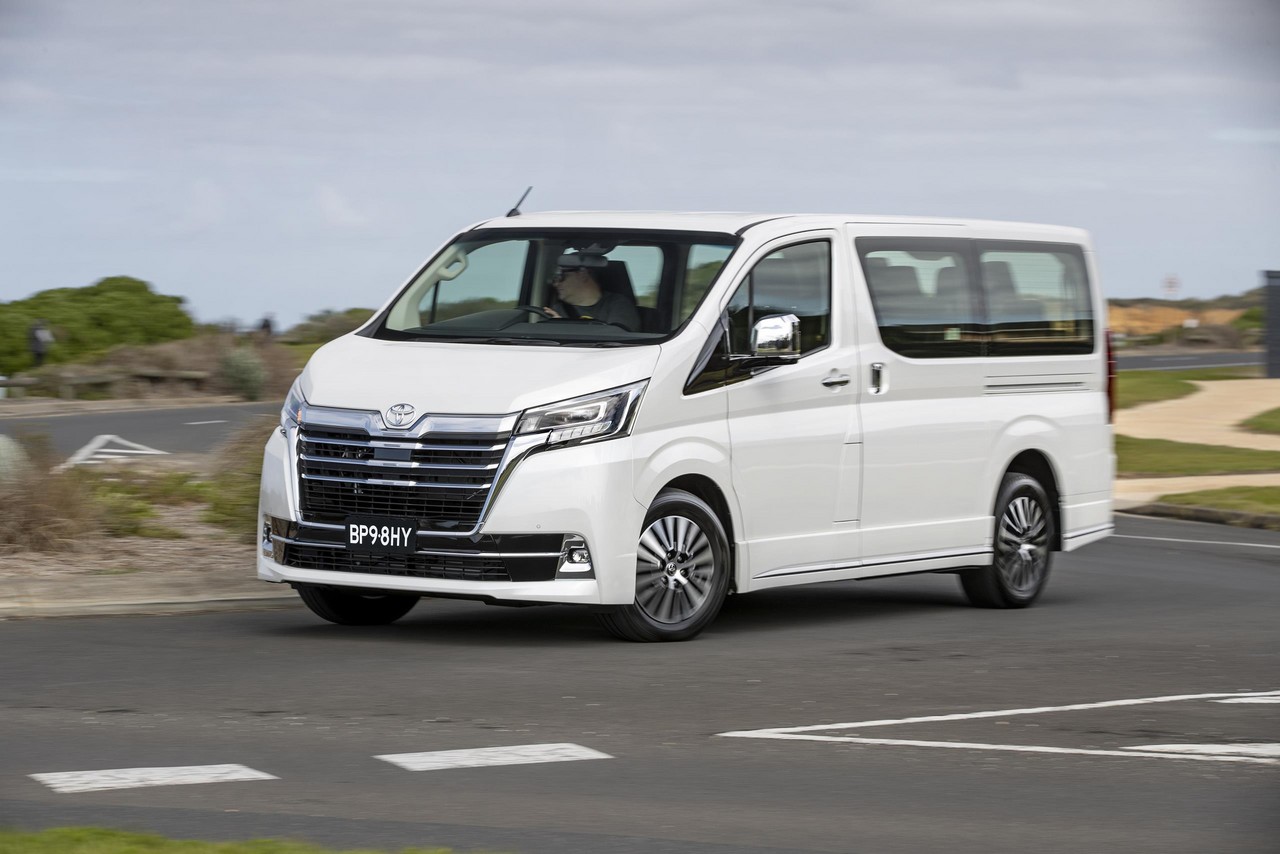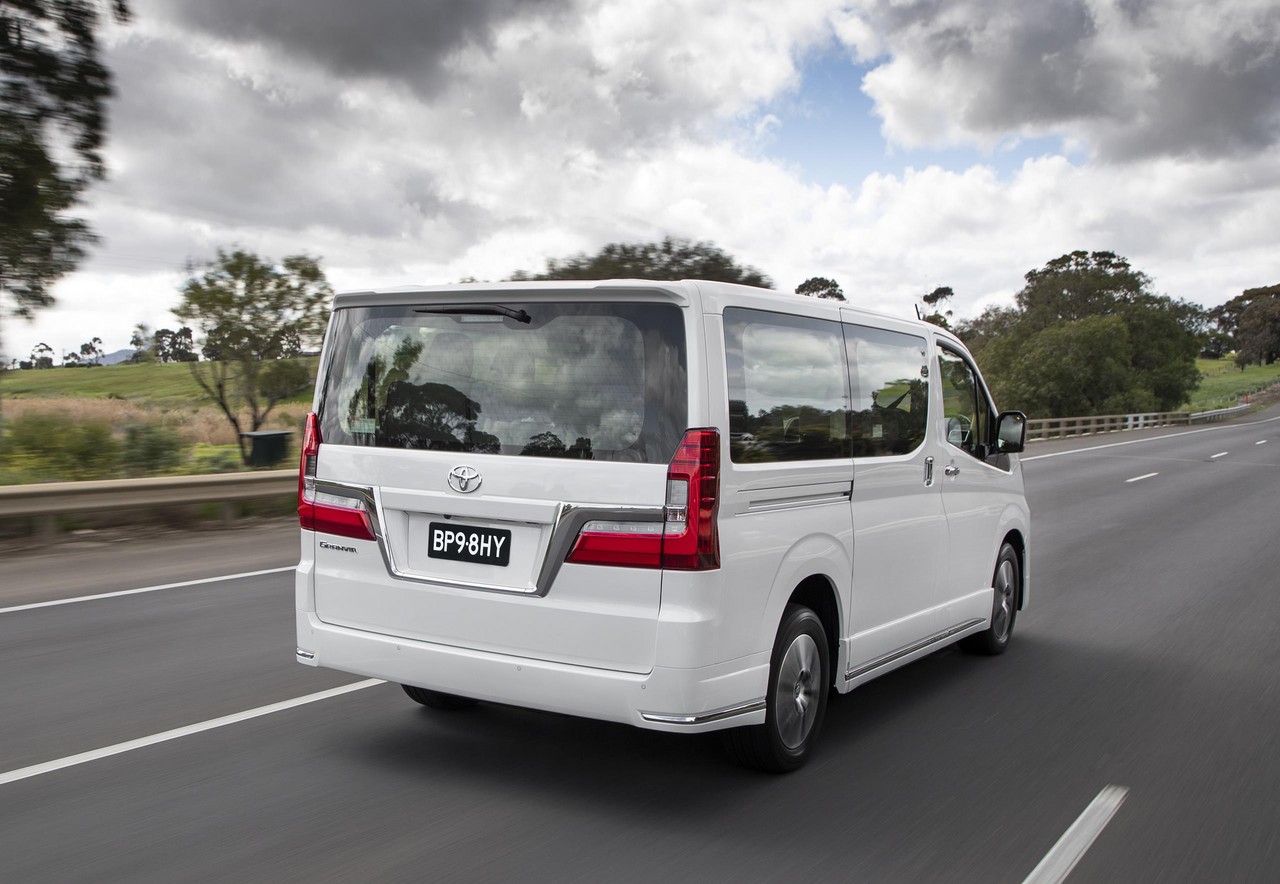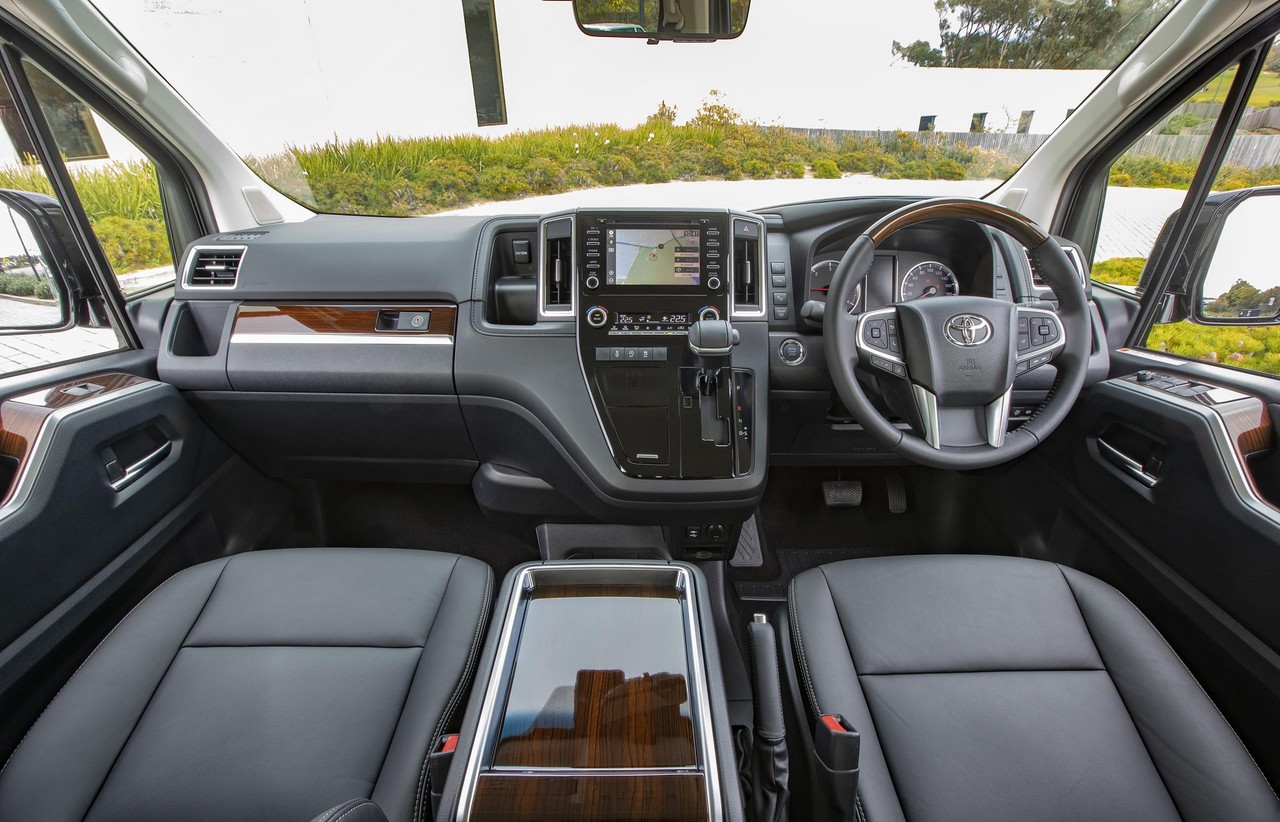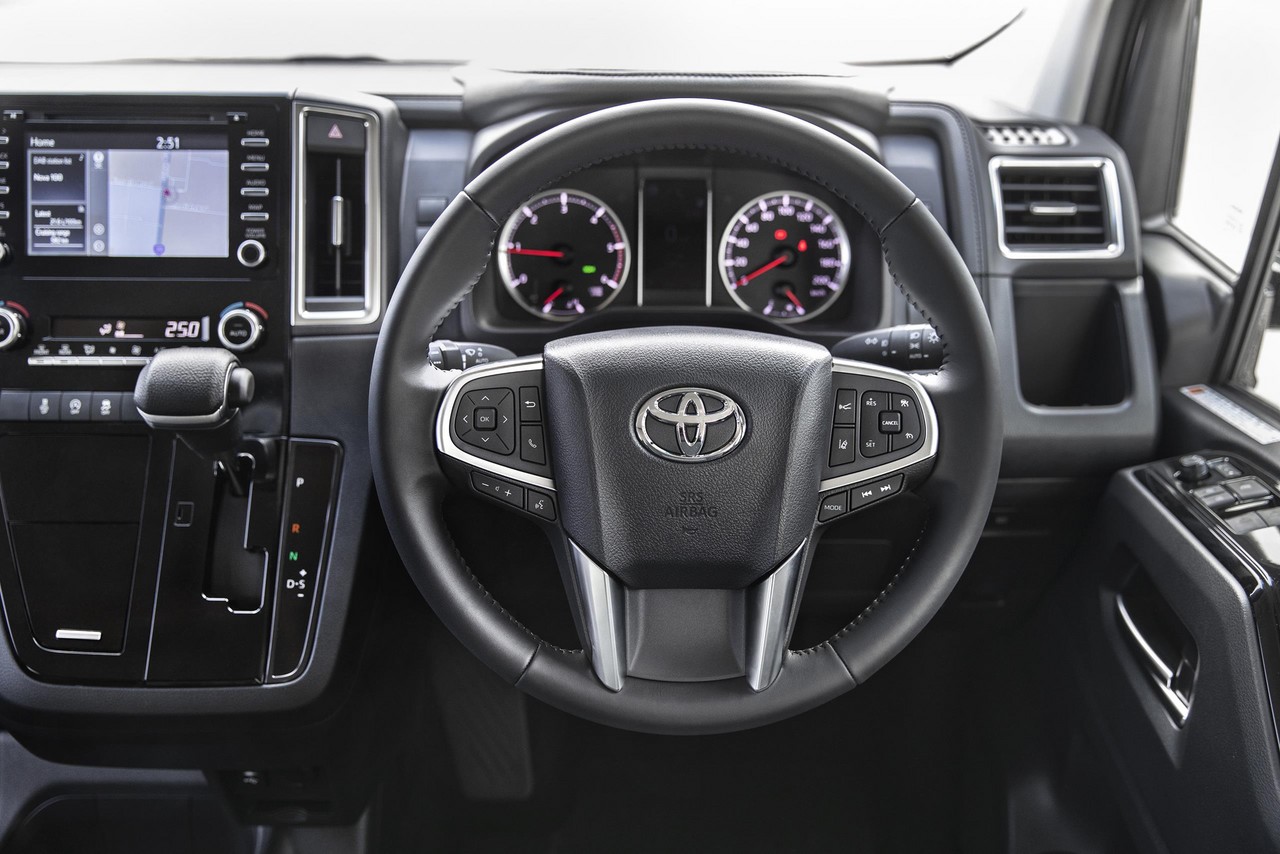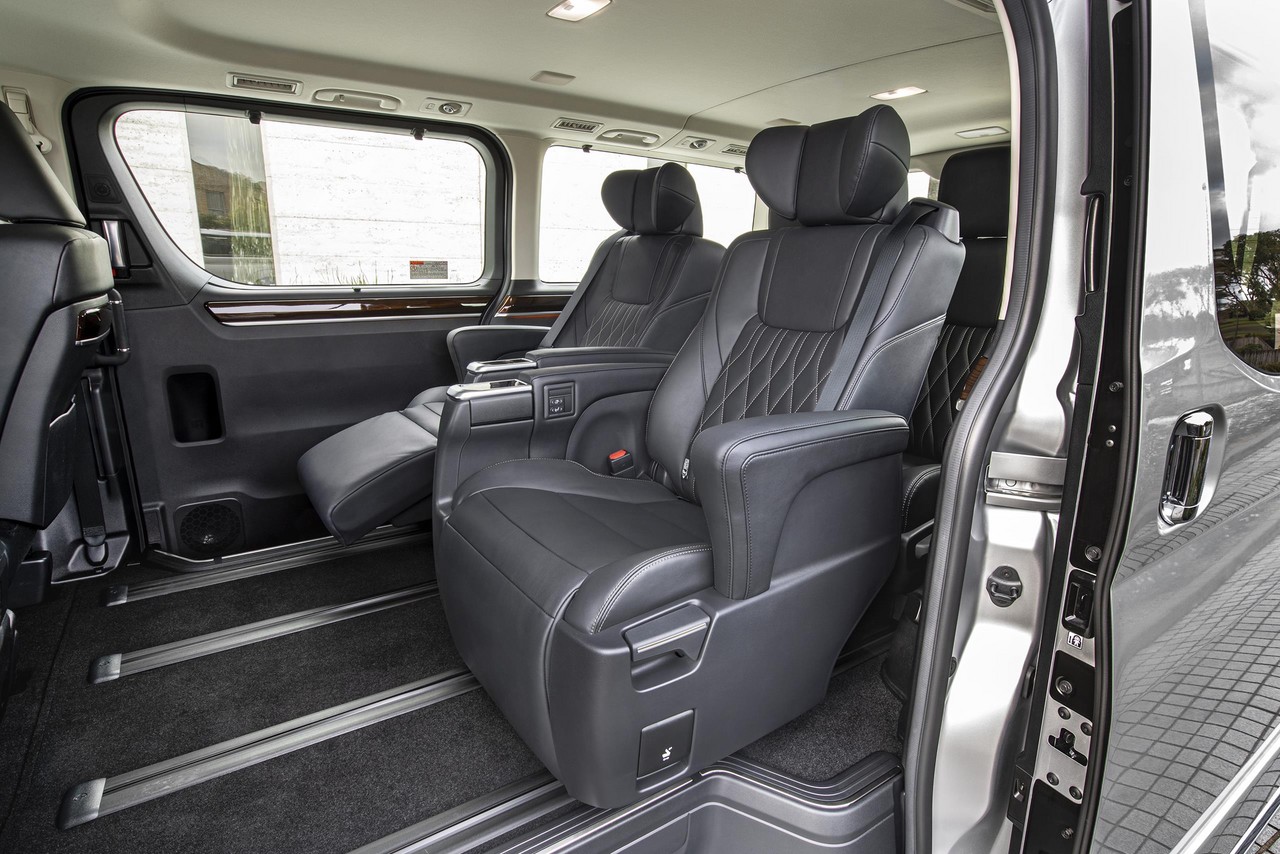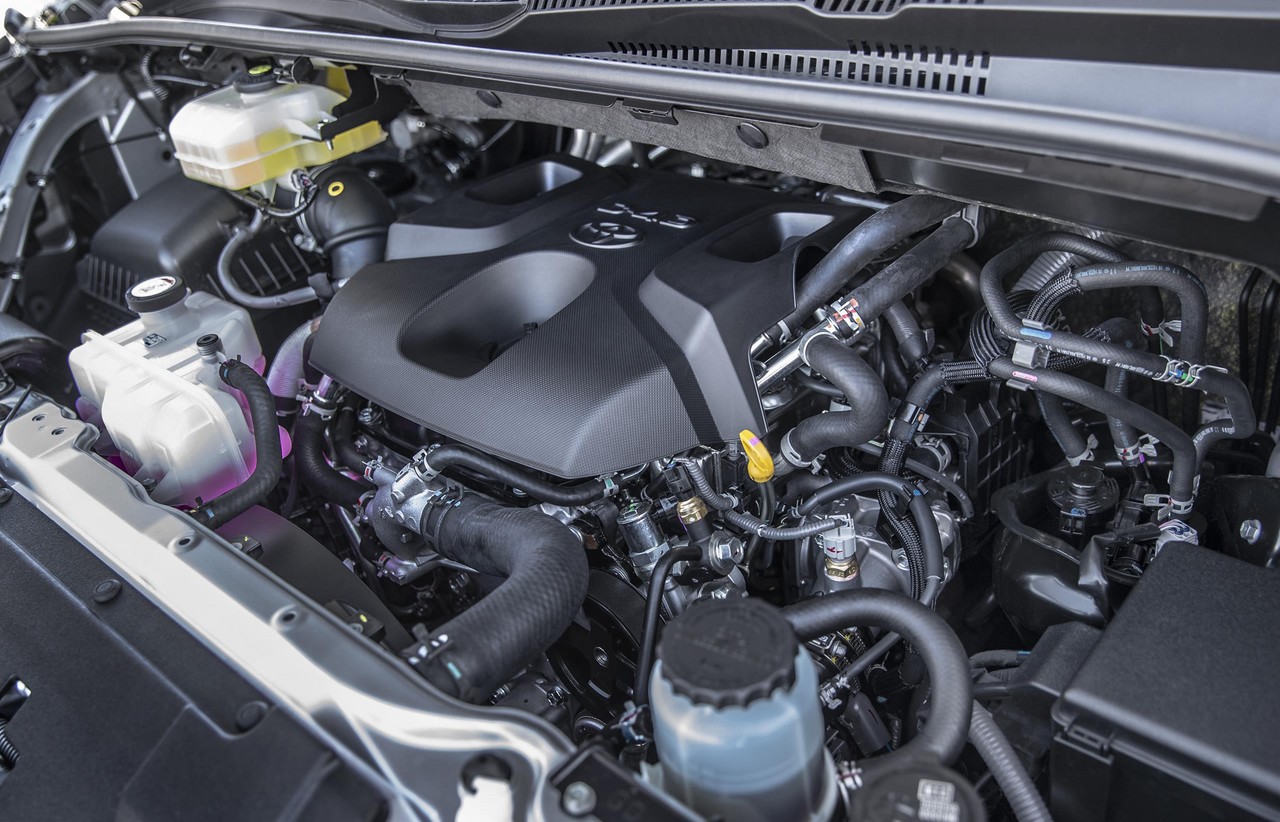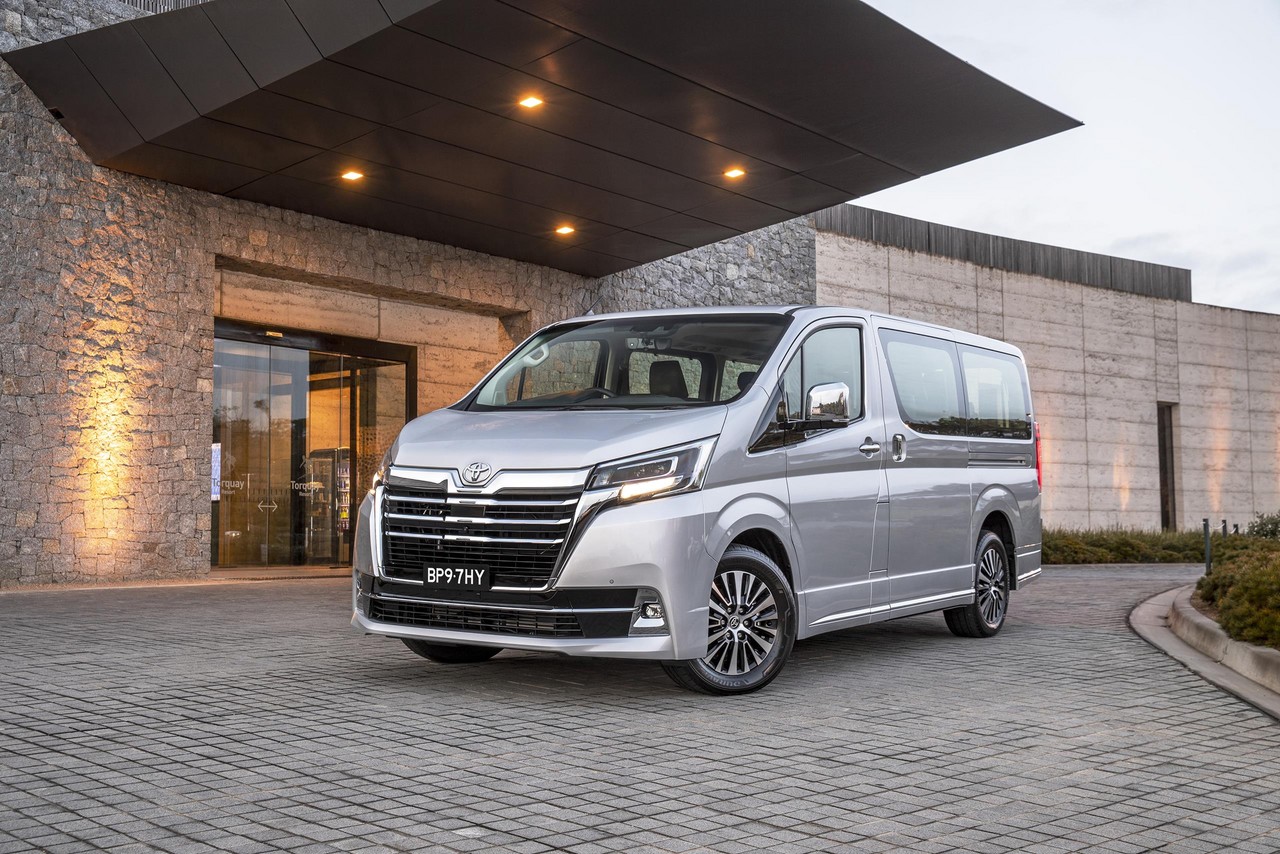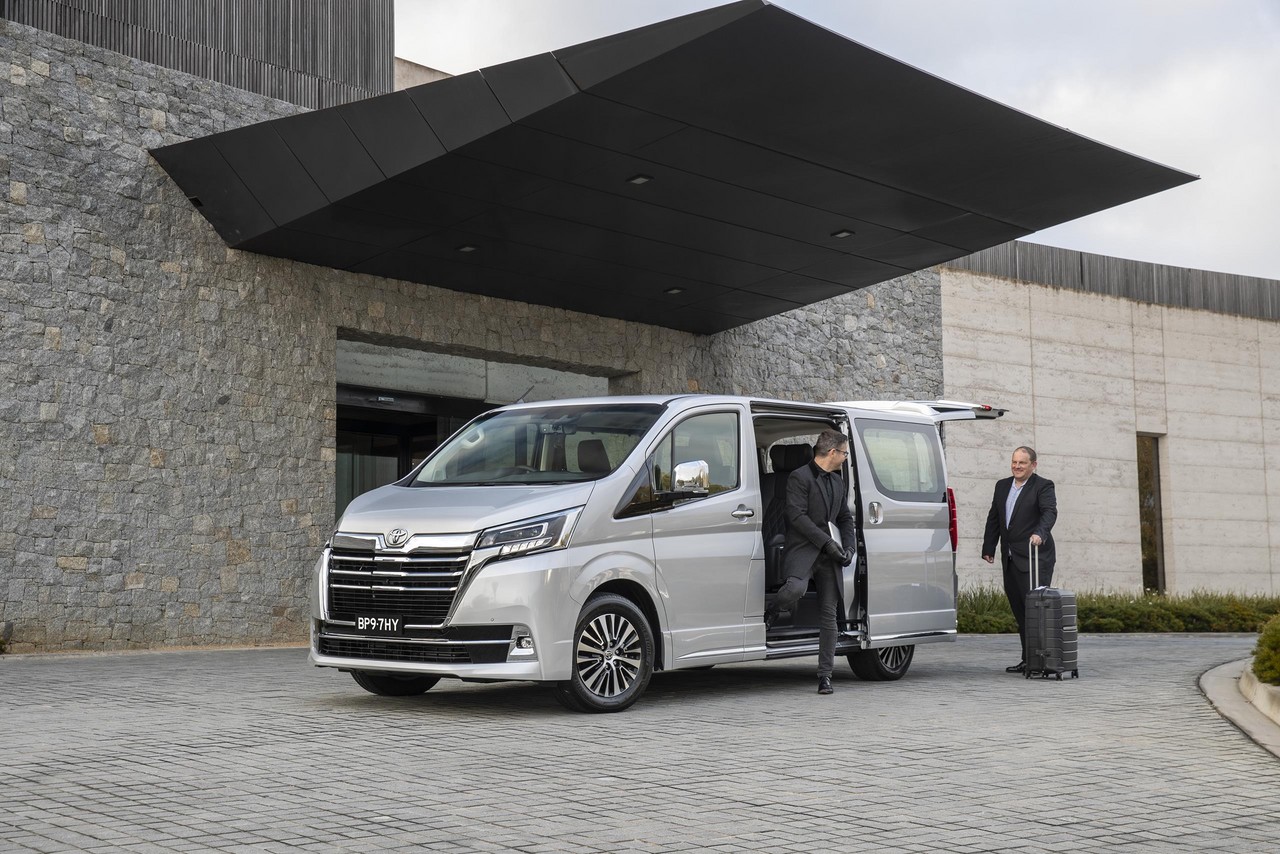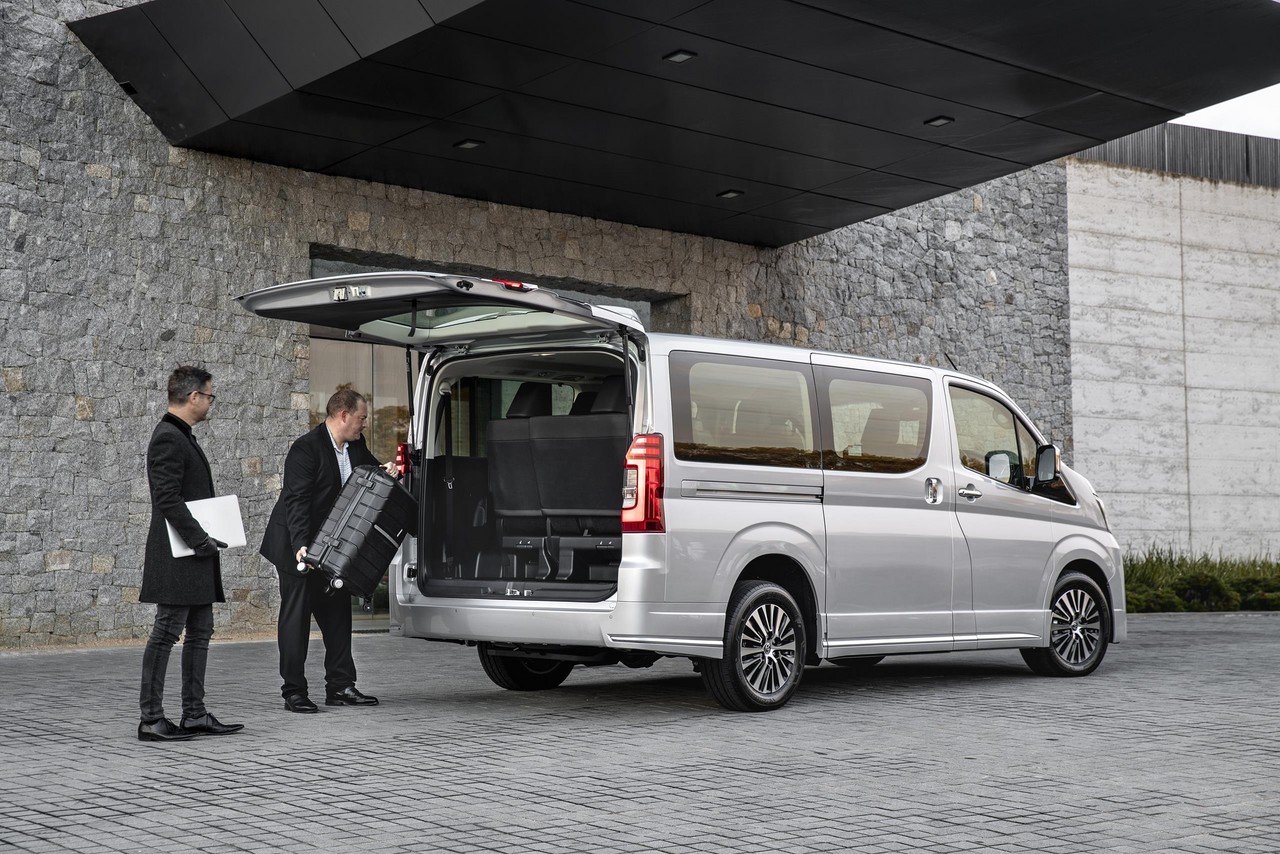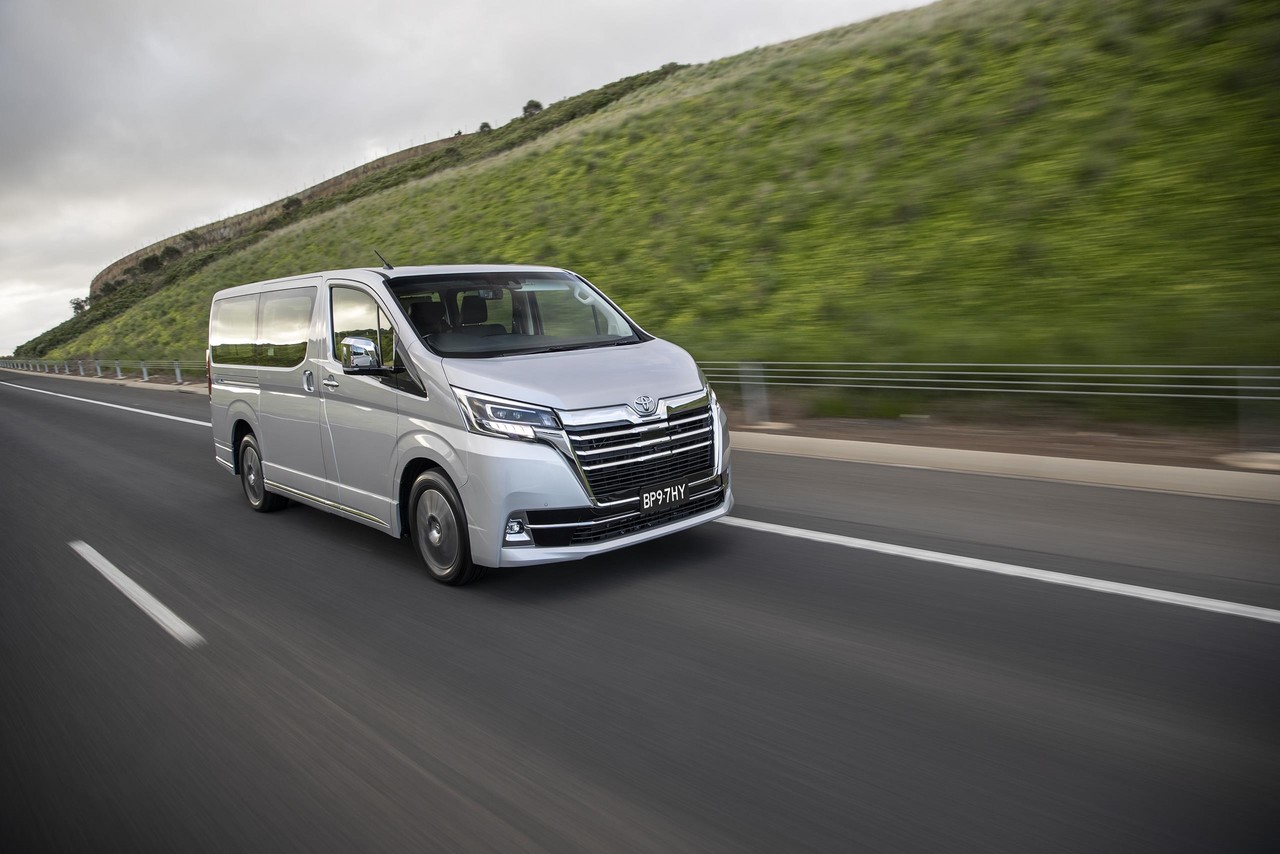
- Spacious interior
- Active safety technologies fitted as standard
- Significantly more expensive than the XR50 Tarago it effectively replaces: starts at $62,990 plus on-roads
- Heavy (circa 2600 kg)
- Dimensions will test car parking skills
- Diesel only powertrain
Overview
Released in Australia in October 2019, the Toyota H33 Granvia was a people mover with six or eight seats. Manufactured in Samut Prakan, Thailand, the rear-wheel drive Toyota H33 Granvia was powered by a 2.8-litre turbo-diesel engine that was mated to a six-speed automatic transmission. Furthermore, the Granvia range consisted of standard and VX variants.
The Toyota Granvia had sliding doors on both sides of the vehicle and, for the Granvia VX, the sliding doors were power-operated. Inside, six-seat Granvia models had three rows of ‘captain’s chairs’; the eight-seat models had an additional two-person fourth-row bench that could be folded and split 60/40.
| Engine | Trans. | Peak power | Peak torque | |
|---|---|---|---|---|
| Granvia, Granvia VX |
2755 cc 1GD-FTV turbo diesel I4 | 6sp auto (AC60) |
130 kW at 3400 rpm | 450 Nm at 1600-2400 rpm |
Body and dimensions
The Toyota H33 Granvia shared its platform with the Toyota Mk.6 HiAce Van and Toyota Mk.6 HiAce Commuter . Compared to the Toyota XR50 Tarago which it effectively replaced, the H33 Granvia was 505 mm longer (5300 mm), 170 mm wider (1970 mm), 240 mm taller (1990 mm) and has a 260 mm longer wheelbase (2950 mm).
Suspension and steering
The Toyota H33 Granvia had MacPherson strut front suspension and multi-link rear suspension. Furthermore, the H33 Granvia had rack-and-pinion steering with electric power assistance.
Safety equipment
Standard safety equipment for the Toyota H33 Granvia included dual front airbags, a driver’s knee airbag, front and second-row seat-mounted side airbags, curtain airbags (understood to be for the first three rows of seats), ABS, electronic brake force distribution, brake assist, electronic stability control, traction control and front seatbelts with pre-tensioners and load limiters.
As standard, the Toyota H33 Granvia was equipped with the following ‘Toyota Safety Sense’ active safety technologies:
- Pre-Collision System (PCS) with pedestrian and daytime cyclist detection: operating at speeds above 10 km/h, PCS used a front-mounted monocular camera sensor and millimetre-wave radar sensor to detect vehicles and pedestrians on the road ahead, during the day or at night; cyclists could also be detected during daylight. If there was a collision risk, the driver would receive an audible warning and a ‘Brake’ message would be shown on the multi-information display. In its second stage, Pre-Collision Brake Assist would prepare the braking system so that it would respond faster if the brake pedal was depressed. If the driver did not react and a collision was imminent, maximum braking force would be applied automatically to reduce the severity of the collision;
- Active Cruise Control (ACC): using the same millimetre-wave radar as PCS, ACC could maintain a safe distance from the vehicle ahead when cruise control was activated – this included applying the brakes to bring the vehicle to rest if necessary and accelerating back to the pre-selected cruising speed when safe to do so;
- Lane Departure Alert (LDA): used the windscreen-mounted camera to monitor the vehicle’s position relative to lane markings on the road surface. If the vehicle was about to depart from its lane without the turn indicator having been applied, an audible tone would alert the driver and a warning would appear in the multi-information display. If the vehicle continued to drift, the brakes on one side of the Granvia would be applied to guide the vehicle towards the centre of its lane;
- Blind Spot Monitor: used radar sensors mounted on the rear corners to detect vehicles in adjacent lanes as they moved into the driver’s blind spot. If detected, the driver would be alerted to their presence by the illumination of LED warning indicators in the door mirror on the side of the Toyota Granvia where there was another vehicle, and the LEDs would remain illuminated while there was another vehicle in the driver’s blind spot. If the driver operated the indicators to move into the lane where there was another vehicle in the driver’s blind spot, the LEDs would flash rapidly;
- Rear Cross Traffic Alert: using the same radar sensors as the Blind Spot Monitor, Rear Cross Traffic Alert could detect traffic approaching from either side of the Toyota Granvia as it reversed out of a parking space. Similarly, LEDs in the door mirror would illuminate to warn the driver;
- Automatic High Beam: operating at speeds above 30 km/h, Automatic High Beam would automatically switch between low and high beam lighting according to ambient light conditions. As such, Automatic High Beam used the windscreen-mounted camera to detect the headlights of oncoming vehicles or traffic ahead and, if detected, would automatically switch to low beam to avoid dazzling other road users; and,
- Road Sign Assist (RSA): the windscreen-mounted camera could recognise certain speed limit signs so that the speed limit would be displayed on the multi-information display (MID) in the instrument cluster.
Wheels, tyres and brakes
The Toyota H33 Granvia had 17 x 7.0J alloy wheels with 235/60 R17 tyres. Furthermore, the H33 Granvia had 296 mm by 38 mm ventilated front brake discs and 320 mm by 22 mm ventilated rear discs.
Features: Toyota Granvia
The infotainment system for the Toyota H33 Granvia included an eight-inch touchscreen, satellite navigation with SUNA live traffic alerts, a six speaker sound system, a digital radio tuner (DAB+), Bluetooth mobile phone connectivity, smartphone integration (Apple CarPlay and Android Auto) and six rear USB ports.
Beyond this, standard features for the Toyota H33 Granvia included dual-zone climate control air conditioning, halogen headlights, a reversing camera with guidelines, front and rear parking sensors, a leather accented steering wheel, remote central locking, power adjustable and heated door mirrors, power windows, tilt and telescopic steering wheel adjustment, a height adjustable driver’s seat, reading lights, a trip computer and an immobiliser.
Features: Toyota Granvia VX
Compared to the standard Toyota Granvia, the Granvia VX was further equipped with a Pioneer sound system that had twelve speakers, quilted leather-accented upholstery, a surround-view camera system, a digital rear view mirror with auto dimming and power-operated sliding doors.
